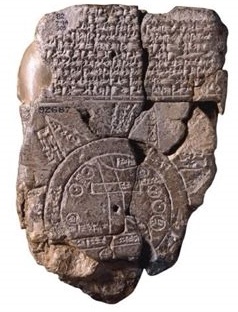

Much of the knowledge known about ancient Greek mathematics in this period is thanks to records referenced by Aristotle in his own works. 384–322 BC), the founder of the Peripatetic school, often used mathematics to illustrate many of his theories, as when he used geometry in his theory of the rainbow and the theory of proportions in his analysis of motion. He also believed that geometrical proportions bound the cosmos together rather than physical or mechanical forces. While not considered a mathematician, Plato seems to have been influenced by Pythagorean ideas about number and believed that the elements of matter could be broken down into geometric solids. 428–348 BC), the founder of the Platonic Academy, mentions mathematics in several of his dialogues. Greek mathematics also drew the attention of philosophers during the Classical period. Other mathematicians active in this period, without being associated with any school, include Theodorus (fl. 435-360 BC), who solved the problem of doubling the cube, identified the harmonic mean, and possibly contributed to optics and mechanics. The greatest mathematician associated with the group, however, may have been Archytas (c. 530–450 BC), and the earliest attempt to square the circle, in the work of Hippocrates of Chios (c.

It has been customary to credit almost half of the material in Euclid's Elements to the Pythagoreans, as well as the discovery of irrationals, attributed to Hippassus (c. However, Aristotle refused to attribute anything specifically to Pythagoras and only discussed the work of the Pythagoreans as a group. Pythagoras himself was given credit for many later discoveries, including the construction of the five regular solids. Pythagoreans believed that "all is number" and were keen in looking for mathematical relations between numbers and things. 580–500 BC), who supposedly visited Egypt and Babylon, and ultimately settled in Croton, Magna Graecia, where he started a kind of cult. Īn equally enigmatic figure is Pythagoras of Samos (c. According to Proclus, he traveled to Babylon from where he learned mathematics and other subjects, and came up with the proof of what is now called Thales' Theorem.

Very little is known about his life and works, although it is generally agreed that he was one of the Seven Wise Men of Greece. Greek mathematics allegedly began with Thales of Miletus (c. Archaic and Classical periods ĭetail of Pythagoras with a tablet of ratios, from The School of Athens by Raphael. Unlike the flourishing of Greek literature in the span of 800 to 600 BC, not much is known about Greek mathematics in this early period-nearly all of the information was passed down through later authors, beginning in the mid-4th century BC. Though no direct evidence is available, it is generally thought that the neighboring Babylonian and Egyptian civilizations had an influence on the younger Greek tradition. While these civilizations possessed writing and were capable of advanced engineering, including four-story palaces with drainage and beehive tombs, they left behind no mathematical documents. The earliest advanced civilizations in Greece and in Europe were the Minoan and later Mycenaean civilizations, both of which flourished during the 2nd millennium BCE. The origin of Greek mathematics is not well documented.


 0 kommentar(er)
0 kommentar(er)
